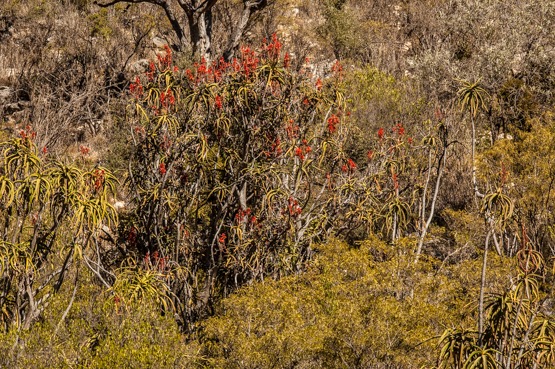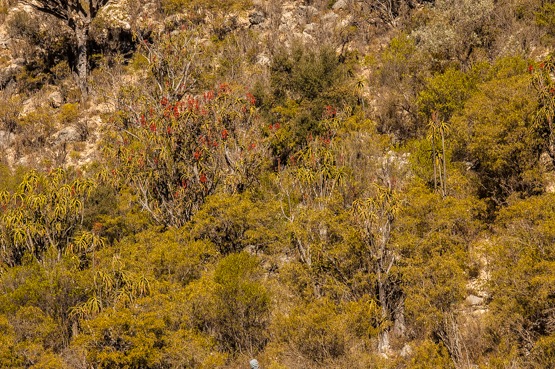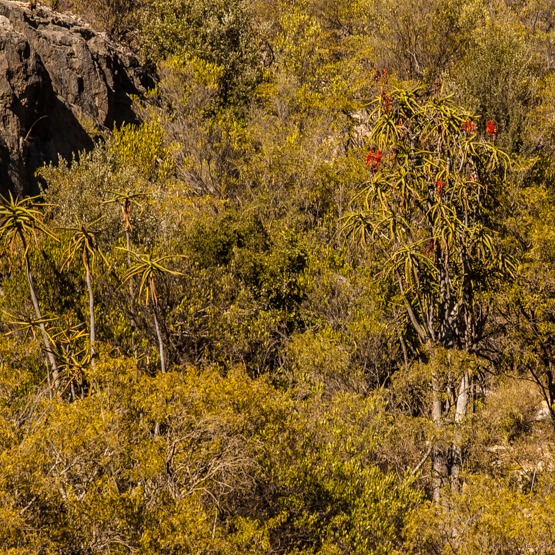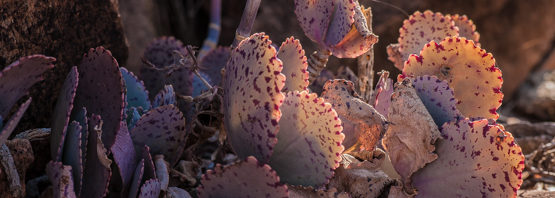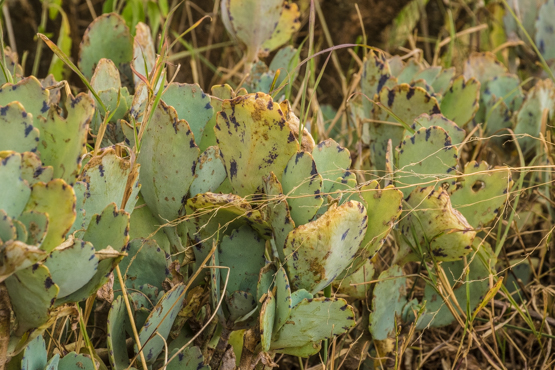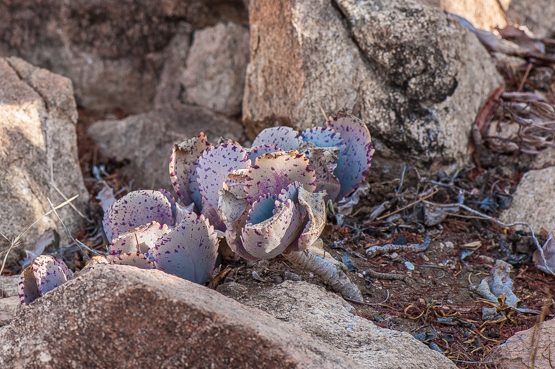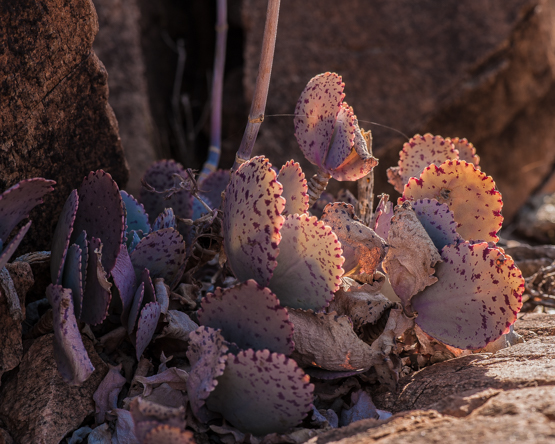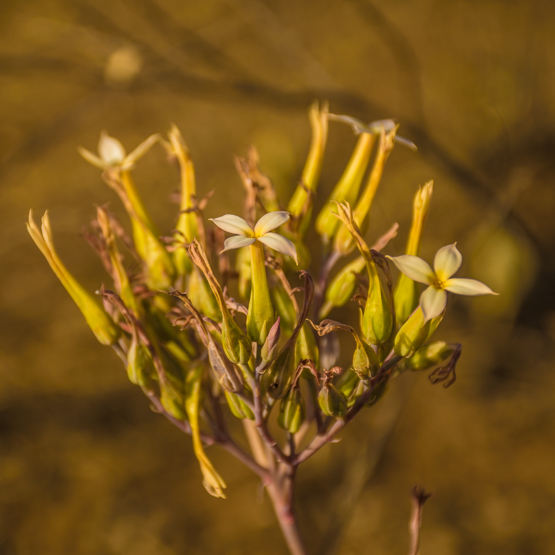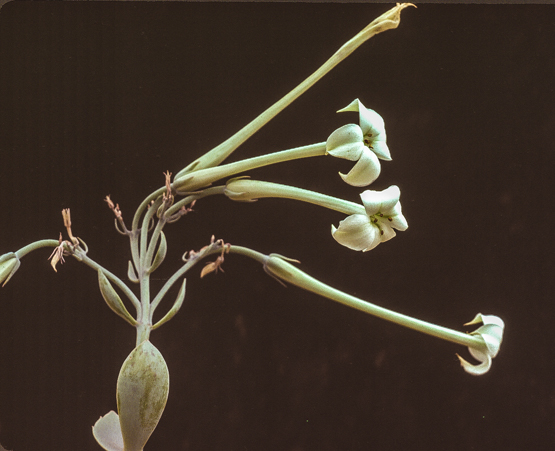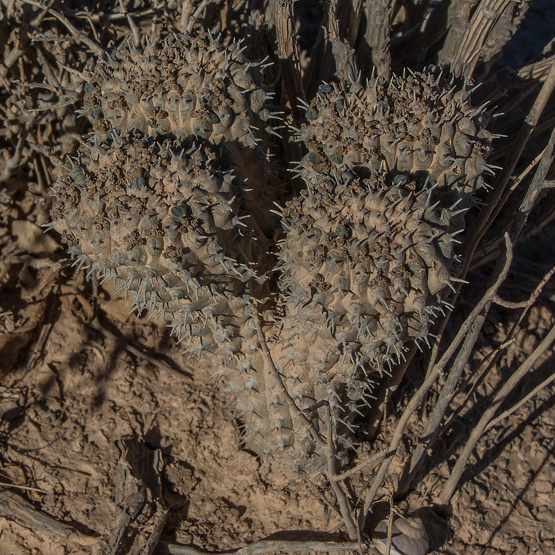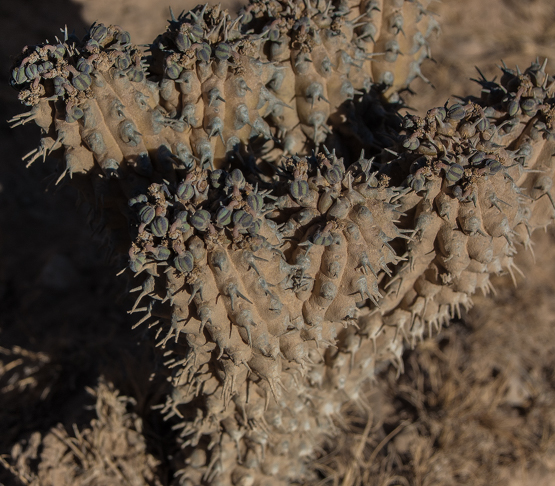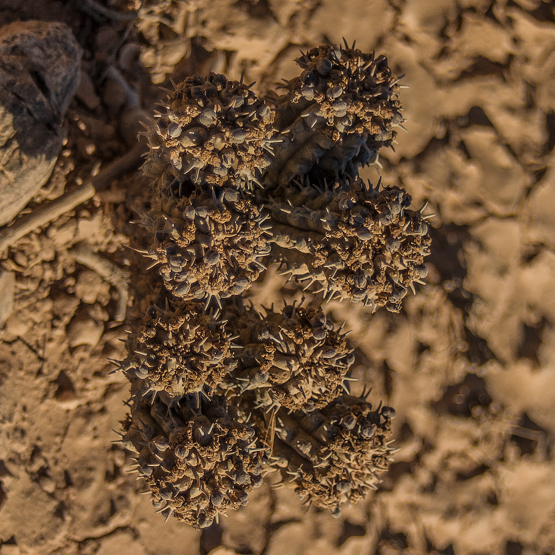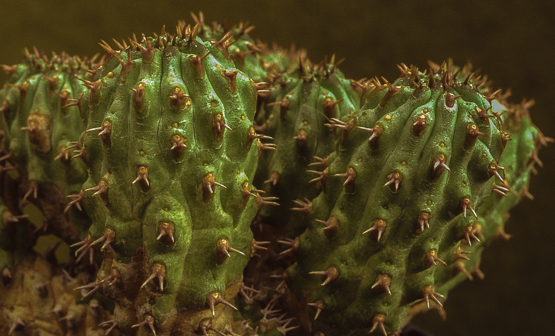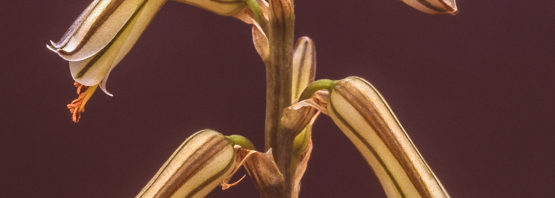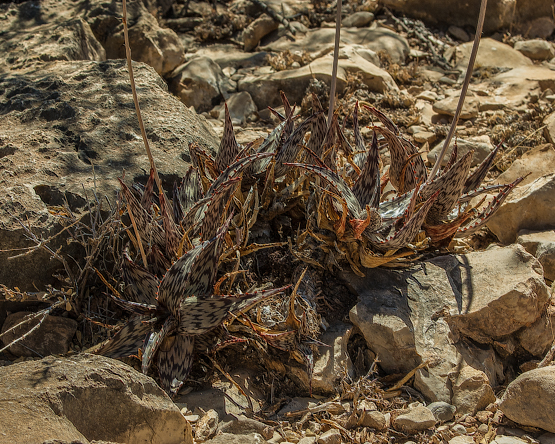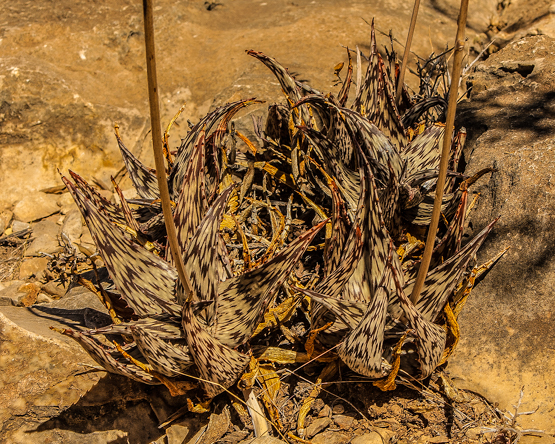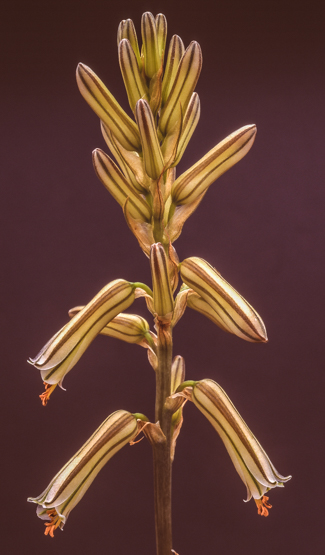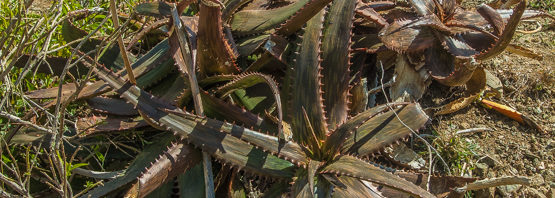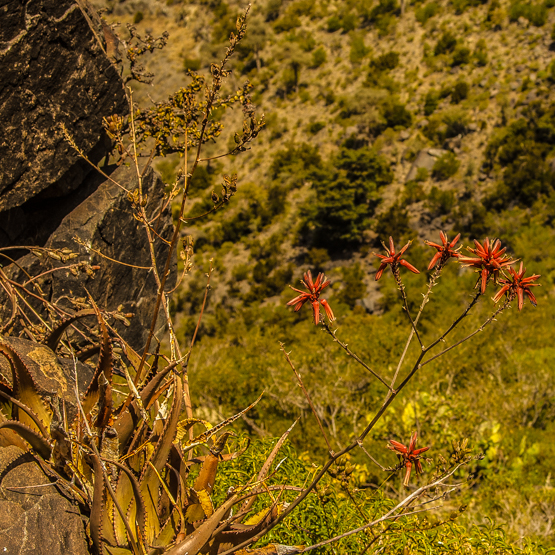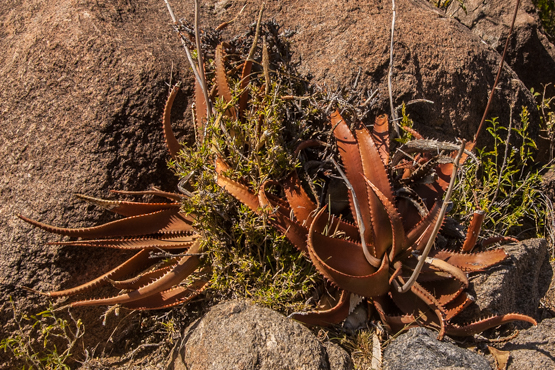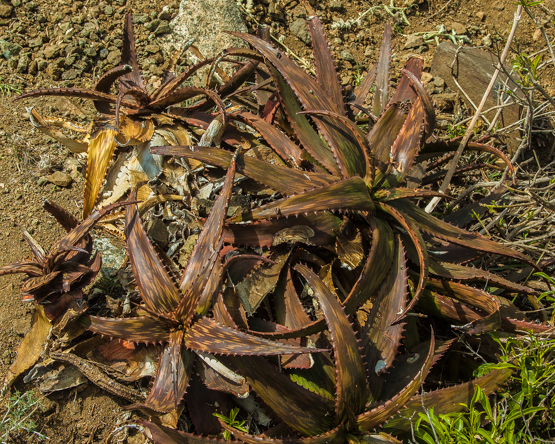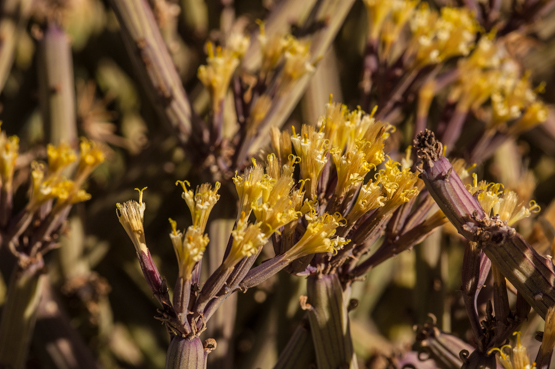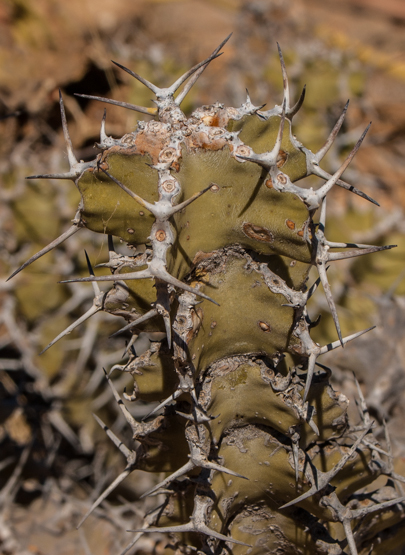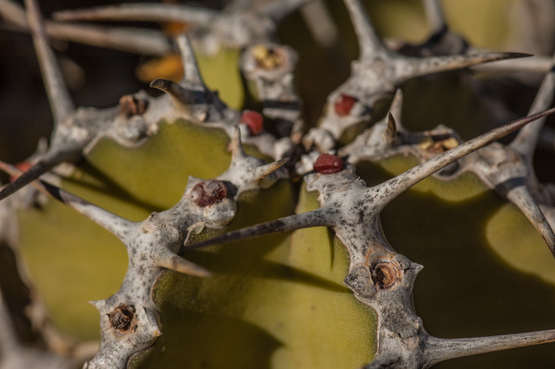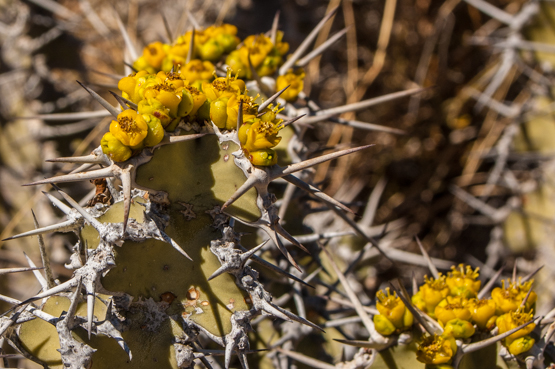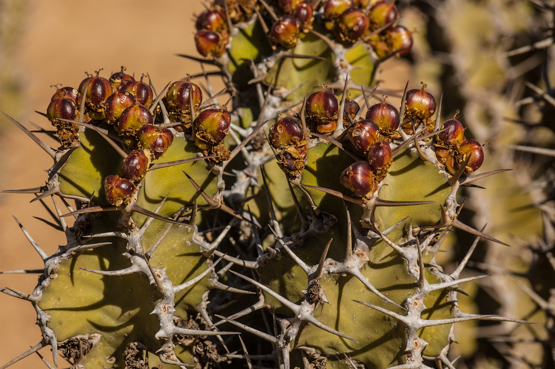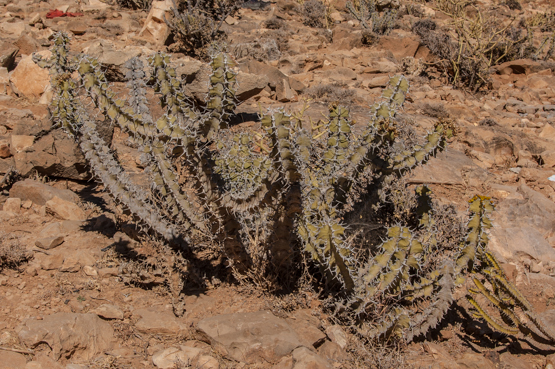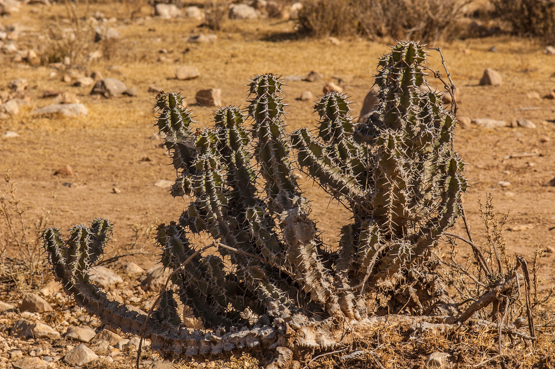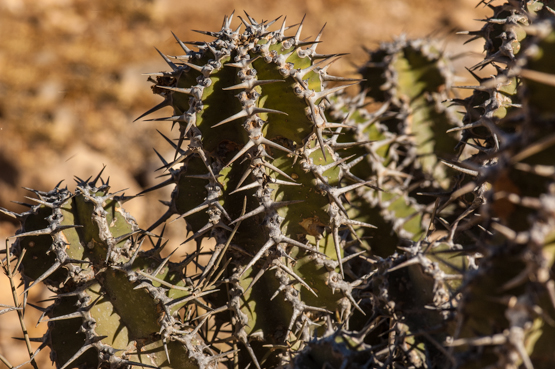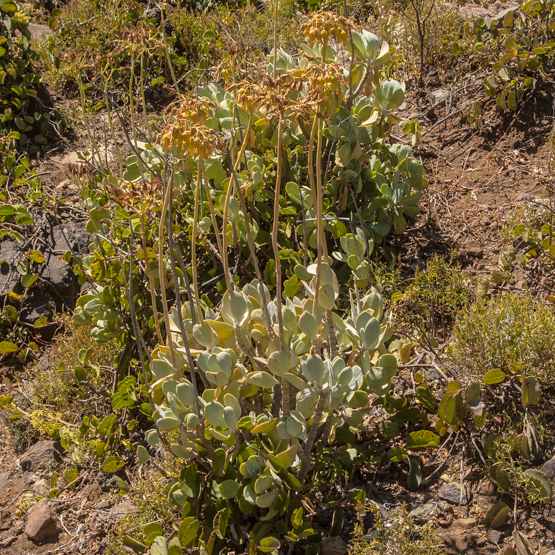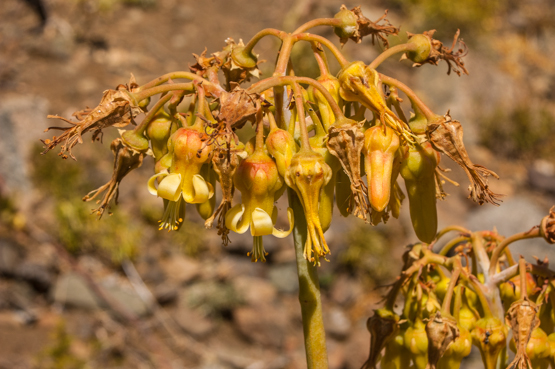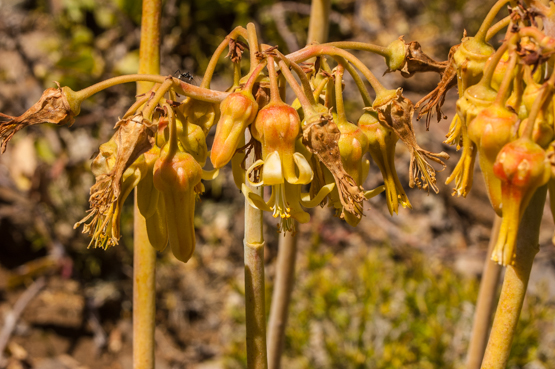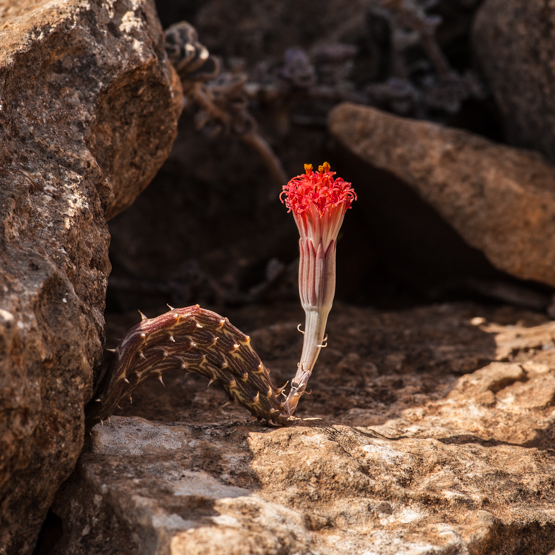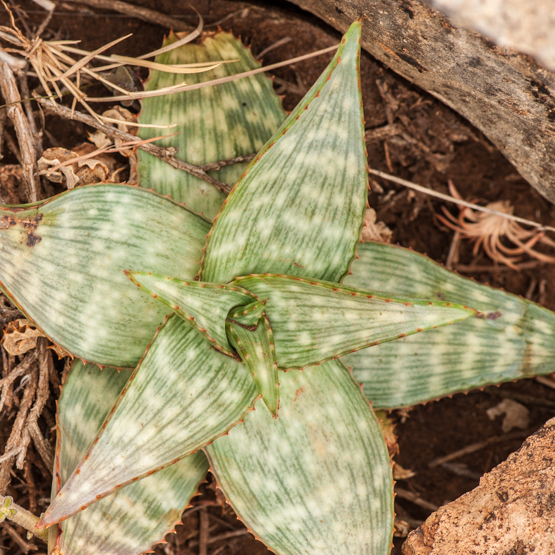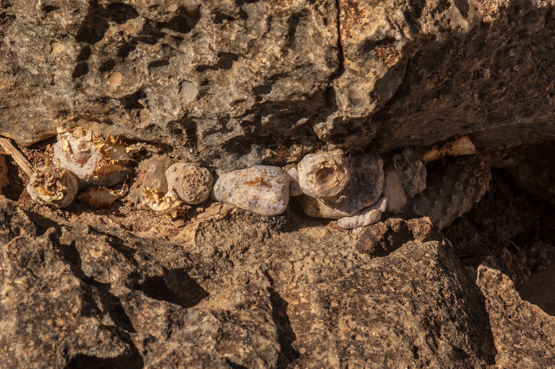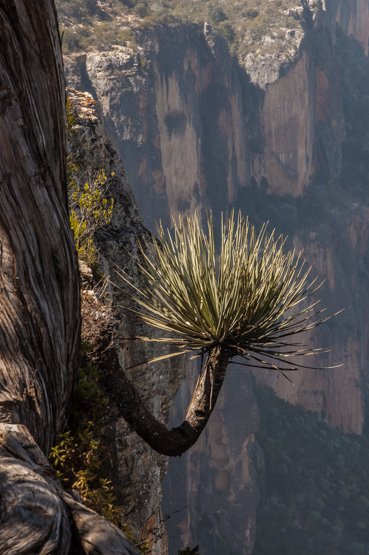Common names: Somali tree aloe, Daar Der (= the tall Aloe)
Of the seven Aloidendron species, only two are found outside Namibia, South Africa, and Mozambique: A. sabaeum (Arabian peninsula) and A. eminens, which at first glance is somewhat similar to the much more familiar A. barberae from South Africa.
It is an upright tree 10-15 m tall, looking somewhat untidy because of its irregularly branching. Its trunk is up to 1.5 m in diameter at ground level.
16-20 leaves are gathered at the tip of each branch; they are 40-45 cm long and about 5 cm wide at the base, gradually narrowing to an obtuse, downwards pointing tip. The upper surface is dull-green and u-shaped in cross-section, whereas the lower surface is rounded; the margins are white with blunt teeth.
The branched inflorescences are 50-60 cm high, with red, somewhat glossy flowers, which are cylindrical-trigonous on cross-section, rather thick and fleshy, and about 4 cm long. They appear mostly in November-February and are pollinated by birds.
Although the species is still locally common in northern Somaliland, it is endangered by habitat loss, logging, and wood harvesting.
It occurs in sheltered, well-wooded ravines and on steep rocky limestone slopes North of Erigavo (Ceerigabo), between about 1500 and 2000 m. The climate is relatively cool here with between 600-1000mm rain per year.
